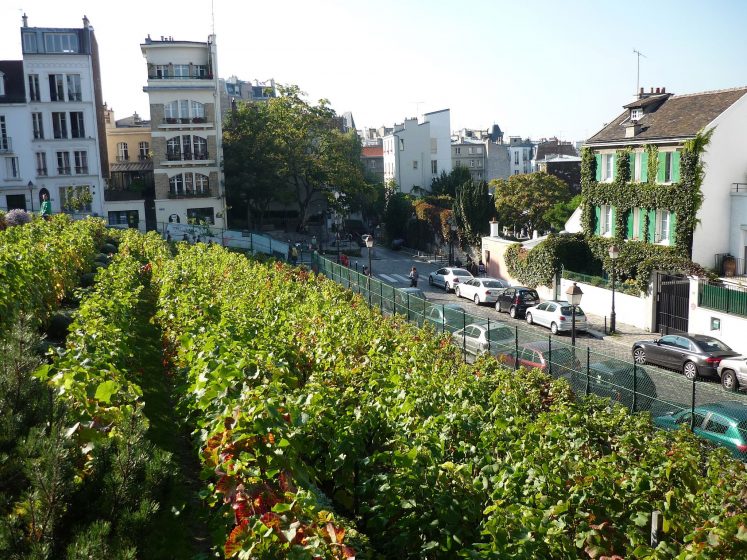How City Blooming can Save You Time, Stress, and Money.
How City Blooming can Save You Time, Stress, and Money.
Blog Article
The Buzz on City Blooming
Table of ContentsEverything about City BloomingCity Blooming - QuestionsSome Of City BloomingCity Blooming Things To Know Before You Get ThisA Biased View of City Blooming
Interested in expanding food for sale in the City of Chicago? Below is a listing of often asked inquiries concerning the regulations and regulations that cultivators must consider when intending an urban farming project.
The zoning change does not change any type of various other codes dealing with composting, building authorizations, acquiring or renting City possessed residential property, business licenses or ecological contamination. There are existing codes that regulate these problems and they remain in complete effect and might apply to your project. Area gardens are generally possessed or handled by public entities, civic companies or community-based companies and kept by volunteers.
Urban farms grow food that is planned to be sold, either on a not-for-profit or for-profit basis. Because of their industrial function, urban ranches need an organization license. Yes. A neighborhood garden is permitted to sell excess produce that was expanded on site if the sales are accessory or subordinate to the garden's key function defined over.
The 10-Second Trick For City Blooming
The amount of compost product can not go beyond 25 cubic yards at any type of given time according to the criteria in 7-28-715 of the City's Municipal Code. Because the soil at a lot of new garden sites requires amending, garden compost, soil, timber chips, or various other materials can be acquired to build or boost the expanding area.

If a structure license is required then the hoophouse will be considered an accessory building. You can learn more about the building authorization demands by contacting the Department of Structures. The 25,000-square-foot dimension limit is intended to stop a solitary neighborhood yard from controling a provided block or detracting from the block's existing residential or industrial character.
The limitation does not apply to gardens situated in Public Open Space (POS) districts. Can there be greater than one neighborhood garden that is 25,000 square feet on a single block? Yes. The dimension limit applies to private gardens, not to individual blocks. No. Fencing is not required, nevertheless, yards that have large parking lot might be needed to mount secure fencing or other landscape design attributes.
City Blooming Things To Know Before You Buy
B1 & B2 areas require that all industrial usage tasks be conducted indoors. Is fence required for urban farms? Fences might be required, along with landscape design and screening, for particular vehicle parking areas and outdoor work or storage locations depending on location and the certain task taking location.
Yes. Urban ranches require building licenses and zoning authorizations before construction. Other types of city evaluation may be called for depending upon certain structures, activities, dimension, landscape design, licensing, public heath and stormwater administration issues. A number of these needs are identified in the project layout or allowing process, nonetheless, the applicant may be responsible to independently recognize certain licenses or permits that may be needed.
Yes. The kind of certificate is figured out by what is occurring at the website. The Department of Company Affairs and Consumer Defense can assist determine the specific type of company permit that's needed. Yes. Off street car parking is needed for a lot of commercial tasks in Chicago. The called for variety of car park areas is based on the variety of employees working with website and not the square video footage of the growing area.
Fascination About City Blooming

A metropolitan farm can market garden compost product created on website, nonetheless, the operation should conform with the laws in 7-28-715 of the Chicago Municipal Code. Aquaponic systems are allowed indoors on urban farms in several zoning districts.
Up to five hives or nests of honey might be maintained as an accessory usage. However, beekeepers need to register with the Illinois Division of Farming. To learn more concerning the recommended zoning change you may contact the Department of Real Estate and Economic Growth, Bureau of Preparation and Zoning at 312.744.8563.
Farming in cities and urban locations An urban farm in Chicago. Urban agriculture describes various methods of cultivating. https://mcliouw-keings-breuncy.yolasite.com/, processing, and distributing food in this page metropolitan locations. The term likewise puts on the area activities of pet husbandry, tank farming, beekeeping, and cultivation in an urban context. Urban agriculture is distinguished from peri-urban agriculture, which takes area in backwoods beside residential areas.
Not known Details About City Blooming
It can entail a motion of organic farmers, "foodies" and "locavores", who seek to form socials media based on a shared principles of nature and community holism. These networks can create by way of formal institutional support, coming to be incorporated right into local town as a "transition community" movement for lasting urban growth.
In either case, the extra direct accessibility to fresh vegetable, fruit, and meat items that might be realised via metropolitan farming can enhance food safety and security and food security while decreasing food miles, bring about reduced greenhouse gas exhausts, thereby adding to environment adjustment mitigation. Some of the very first proof of metropolitan farming comes from Mesopotamia.
Report this page